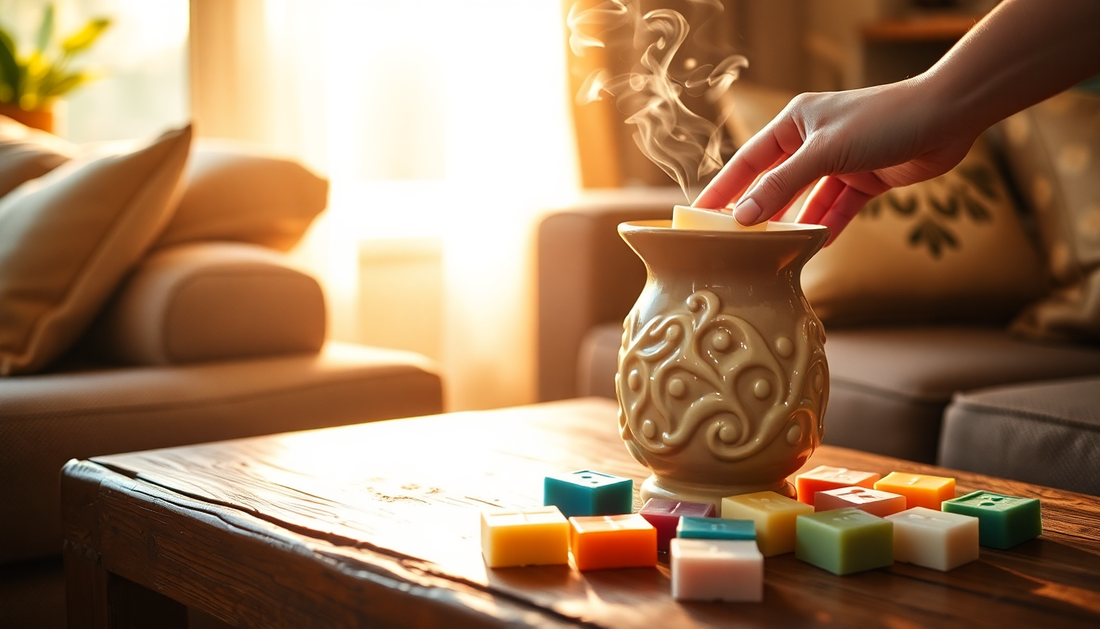
Troubleshooting Common Wax Melt Issues: Unlock the Full Potential of Your Home Fragrance
Share
Wax melts have become a popular choice for adding a touch of fragrance to our homes. These small, concentrated blocks of wax infused with essential oils or fragrances offer a convenient and long-lasting way to fill our spaces with delightful scents. However, as with any home fragrance product, there can be a few common issues that arise. In this comprehensive guide, we'll explore the most prevalent wax melt challenges and provide you with practical solutions to ensure you get the most out of your home fragrance experience.
Understanding Wax Melts
Wax melts, also known as tarts or cubes, are a type of home fragrance product that is designed to be melted in a wax warmer or oil burner. Unlike traditional candles, wax melts do not have a wick, but instead, they rely on the heat from the warmer to release their fragrance. This makes them a safer and more efficient option for those who want to enjoy a fragrant atmosphere without the risk of an open flame.
Wax melts come in a variety of shapes, sizes, and scents, catering to a wide range of personal preferences. From floral and fruity to woodsy and spicy, there's a wax melt out there to suit every mood and occasion. Whether you're looking to create a cozy ambiance in your living room or a refreshing atmosphere in your bathroom, wax melts can be a versatile and effective solution.
Troubleshooting Common Wax Melt Issues
While wax melts are generally easy to use, there are a few common issues that can arise. Let's dive into the most prevalent challenges and explore effective ways to address them.
Poor Scent Throw
One of the most common complaints about wax melts is a lack of scent throw, meaning the fragrance doesn't seem to permeate the room as expected. There are a few potential causes for this:
Causes:
- Insufficient wax melt quantity: If you're using too small of a piece, the fragrance may not be strong enough to fill the space.
- Incorrect wax warmer temperature: The wax warmer temperature needs to be high enough to fully melt the wax and release the fragrance, but not so high that it burns off the scent.
Solutions:
- Use a larger piece of wax melt: Try breaking off a bigger chunk or using multiple pieces at once.
- Adjust the wax warmer temperature: Experiment with different temperature settings to find the sweet spot that fully melts the wax without burning off the scent.
Uneven Melting
Another common issue with wax melts is uneven melting, where the wax doesn't melt evenly, leaving some areas of the melt untouched.
Reasons for Uneven Melting:
- Incorrect wax warmer placement: If the wax warmer is not positioned correctly, the heat may not be distributed evenly.
- Wax warmer design: Some wax warmers have hot spots or uneven heating elements that can lead to uneven melting.
- Wax melt shape or size: Certain shapes or sizes of wax melts may not melt as evenly as others.
Tips to Achieve Even Melting:
- Ensure proper wax warmer placement: Position the wax warmer on a level surface and make sure it's not too close to walls or other objects that could block the heat.
- Rotate the wax melt periodically: Use a utensil to gently rotate the wax melt while it's melting to help distribute the heat evenly.
- Consider the wax melt shape: Opt for wax melts with a flat or even surface, as they tend to melt more uniformly.
- Use smaller wax melt pieces: Larger wax melts may be more prone to uneven melting, so try breaking them into smaller chunks.
Discoloration
Over time, wax melts may start to discolor, turning yellow, brown, or even black. This can be concerning, but it's often a natural occurrence.
Factors Leading to Discoloration:
- Exposure to light: Prolonged exposure to sunlight or other bright light sources can cause the wax to discolor.
- Oxidation: The fragrance oils in the wax melts can oxidize over time, leading to discoloration.
Ways to Minimize Discoloration:
- Store wax melts in a cool, dark place: Keep them away from direct sunlight and bright lighting.
- Use wax melts within their recommended shelf life: Check the manufacturer's guidelines and use the wax melts before they start to degrade.
- Choose high-quality wax melts: Look for products made with pure, premium-grade wax and fragrance oils.
Crystallization
Crystallization is another common issue with wax melts, where the wax develops a grainy or crystallized appearance.
Understanding Crystallization in Wax Melts: Crystallization occurs when the wax molecules in the melt start to solidify and form distinct crystals. This can happen due to temperature fluctuations or the presence of certain additives.
Addressing Crystallization Issues:
- Avoid temperature changes: Keep the wax melts at a consistent temperature, as sudden temperature drops can trigger crystallization.
- Use a wax warmer with a steady heat source: Look for warmers that maintain a consistent temperature to prevent crystallization.
- Consider the wax melt formula: Some wax melts are more prone to crystallization than others, so try different brands or formulations.
Wax Residue
After the wax melt has been used, there may be leftover wax residue in the warmer, which can be tricky to clean.
Dealing with Leftover Wax:
- Allow the wax warmer to cool completely before attempting to clean it.
- Use a soft cloth or paper towel to gently wipe away any solidified wax.
- For stubborn residue, you can try using a small amount of rubbing alcohol or a dedicated wax warmer cleaner.
Cleaning Tips for Wax Warmers:
- Unplug the wax warmer and let it cool completely before cleaning.
- Use a soft, damp cloth to wipe down the interior and exterior of the warmer.
- Avoid using abrasive cleaners or scrubbing pads, as they can damage the warmer's surface.
- Dry the warmer thoroughly before using it again.
Safety Concerns
While wax melts are generally safe, there are a few safety considerations to keep in mind.
Common Safety Issues:
- Overheating the wax: Exposing the wax to excessively high temperatures can create a fire hazard.
- Pets and children: Wax warmers should be placed out of reach of pets and young children to prevent accidental burns or ingestion.
- Allergies and sensitivities: Some individuals may have allergic reactions or sensitivities to the fragrance oils used in wax melts.
Best Practices for Safe Wax Melt Usage:
- Follow the manufacturer's instructions for proper use and temperature settings.
- Keep wax warmers away from flammable materials and out of reach of pets and children.
- Monitor the wax warmer while in use and never leave it unattended.
- Be mindful of any allergies or sensitivities and discontinue use if any adverse reactions occur.
Maximizing Wax Melt Performance
To get the most out of your wax melts, it's important to follow proper storage and usage techniques.
Proper Storage Techniques:
- Keep wax melts in a cool, dry place, away from direct sunlight and heat sources.
- Store them in an airtight container or original packaging to preserve the fragrance.
- Avoid exposing wax melts to extreme temperature fluctuations, as this can affect their performance.
Optimal Usage Tips:
- Use the recommended amount of wax melt for the size of the room or space you're trying to fragrance.
- Experiment with different wax warmer settings to find the optimal temperature for your specific wax melts.
- Rotate or stir the wax melt periodically to ensure even melting and fragrance release.
- Replace the wax melt when the fragrance starts to fade or the wax becomes discolored.
Conclusion
Wax melts can be a delightful and convenient way to fill your home with captivating fragrances. By understanding and addressing the common issues that can arise, you can unlock the full potential of your wax melt experience. Remember to experiment, be patient, and always prioritize safety. With the right techniques and high-quality products, you'll be well on your way to creating a fragrant oasis in your home.
